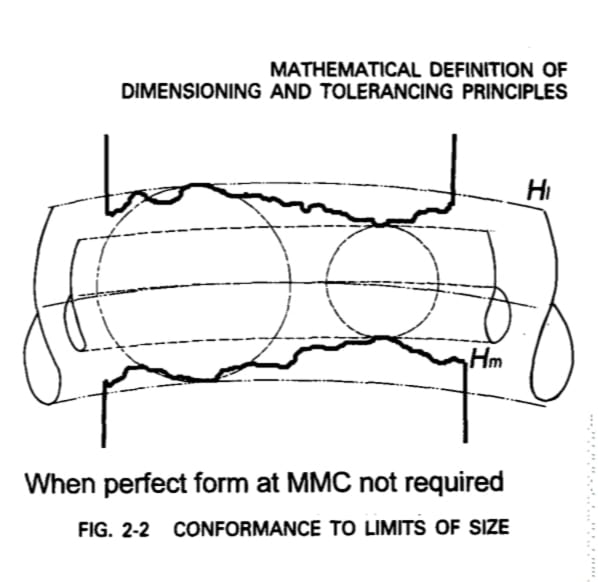3DDave
Aerospace
- May 23, 2013
- 11,164
Suppose there is a basic brick shape - Datum feature A uses the largest face, datum feature B uses the next largest face, and datum feature C uses one of the smallest faces.
In the same face identified as datum feature A is a hole through the part of diameter E, positioned at MMB with [A|B|C] as the DRF with a tolerance of dia. X. Assume the basic dimension to B is b1, and the basic dimension to C is c1.
Now the face opposite of C is identified as datum feature D and is toleranced with a profile tolerance to [A|B|C] with a zone width of Y. Assume the basic dimension from C to D is d1.
The desire is to make a bracket sharply bent of a rectangular piece that mates to datum feature A, will have one edge coincident to datum feature B plane, and hook around the end of the part to mate with datum feature D. A bolt will pass through both parts.
What is the virtual size of that hole in the [A|B|D] DRF?
In the same face identified as datum feature A is a hole through the part of diameter E, positioned at MMB with [A|B|C] as the DRF with a tolerance of dia. X. Assume the basic dimension to B is b1, and the basic dimension to C is c1.
Now the face opposite of C is identified as datum feature D and is toleranced with a profile tolerance to [A|B|C] with a zone width of Y. Assume the basic dimension from C to D is d1.
The desire is to make a bracket sharply bent of a rectangular piece that mates to datum feature A, will have one edge coincident to datum feature B plane, and hook around the end of the part to mate with datum feature D. A bolt will pass through both parts.
What is the virtual size of that hole in the [A|B|D] DRF?

